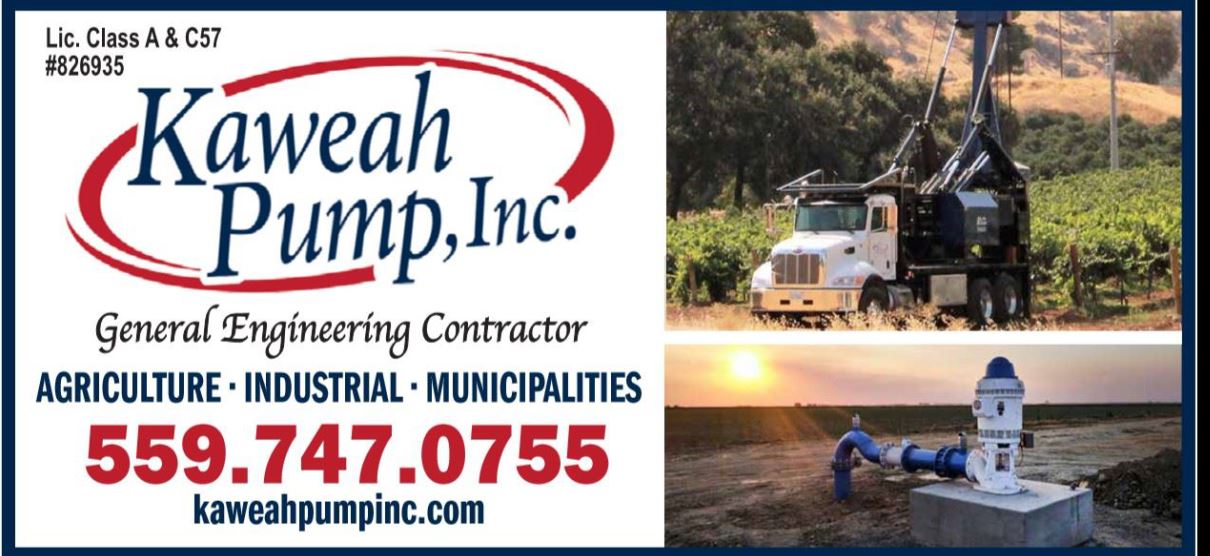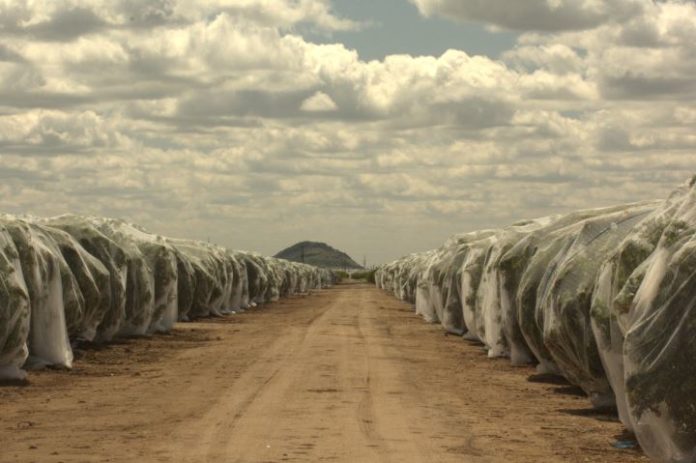 The Tulare Irrigation District held its board of directors meeting at its Tulare headquarters on Tuesday, March 10, 2020. The TID meeting is one of the more relaxed in as much as the district has a pretty good surface supplies. And it was sprinkling outside with more rain predicted later in the day. That put folks in a good mood. Farmers, frogs and ducks like the rain. Of course the Corona virus was on everyone’s mind. I’ll spare you the directors name but he said he saw on Craigslist “Man with Corona virus seeks woman with lyme disease.” Another director, Mike Thomas had tickets for a guided bicycle tour of Italy that has been cancelled due to virus concerns.
The Tulare Irrigation District held its board of directors meeting at its Tulare headquarters on Tuesday, March 10, 2020. The TID meeting is one of the more relaxed in as much as the district has a pretty good surface supplies. And it was sprinkling outside with more rain predicted later in the day. That put folks in a good mood. Farmers, frogs and ducks like the rain. Of course the Corona virus was on everyone’s mind. I’ll spare you the directors name but he said he saw on Craigslist “Man with Corona virus seeks woman with lyme disease.” Another director, Mike Thomas had tickets for a guided bicycle tour of Italy that has been cancelled due to virus concerns.
Chairman David Bixler called the meeting to order at 9:00am or so and there were no public comments. The minutes were approved and Water Master Marco Crenshaw brought the mood down a little bit with his water report. It wasn’t his fault but there Kaweah River runoff is estimated at only 40 percent. The good news is there are no spills in the TID system. Lake Kaweah has 30,000 a/f in storage. The reservoir holds 195,000 a/f. Lake Millerton on the San Joaquin River has about 275,000 a/f out of 500,000 a/f storage capacity. The SJR watershed is expected to yield about 42 percent. Unless things change TID isn’t looking to depend on Friant water. I remember when I first started coming to TID meetings. It was in the middle of the last drought and when it finally began to rain there were newer hires on staff who hadn’t seen the system fully charged.
Crenshaw gave the groundwater report. In 1922 depth to groundwater was about 20 feet and it is now about 120 feet. This is an improvement from the last drought’s record low of 170 feet deep. In any event TID’s a member of the Mid Kaweah GSA and the minimum threshold is 225 feet deep. So, at this time there are no onerous, Spartan restrictions. TID has been aware of the areas where the groundwater levels are changing and they react. The northwest corner of the district has recharge basins and the groundwater level is dramatically improving.
TID General Manager Aaron Fukuda reported the efforts will be repeated in other areas of the district. There are some sandy patches ideal for recharge and the idea is to push back the overdraft coming from the City of Tulare. The city has some basins at its wastewater treatment facility often sitting dry that would be ideal but the State of California doesn’t allow recharge in such a space.
District engineer Jeremy Barroll had been monitoring groundwater elevation from about a dozen wells. About half are dedicated monitoring wells. He’s found out when the wells are shut down the groundwater aquifer in the confined, sub clay layer is bouncing back. There are a lot of crops harvested or near their growing cycle by August and demand does go down somewhat. Fukuda explained the sub clay layer is confined and subject to head pressure. So it responds in a positive direction. He said Stanford University is working with NASA to put in automatic monitors and TID is a candidate for this program. Barroll wouldn’t have to spend as much time gathering data.
Fukuda said TID’s water management activities include to possible short term agreements with Westside Mutual. An exchange and a recirculation/recapture of SJR restoration flows. The board agreed.
TID Superintendent Wayne Fox gave his report and he was proud to announce the new spray truck was pretty much built in-house. TID, under Fox’s guidance has been very innovative concerning spray rigs and their fabrication. When they can’t find what they want on the market they build it themselves. Good for them. Fox also reported there are trucks moving sand around the district but supplies can’t meet demand. Fukuda said he, Crenshaw and Fox have sat down and come up with a district maintenance plan. Considering it may be a long, dry summer there will be time and personnel available to get some work done on the system. The problem is while less water means more time to work it also means less money. Fukuda said there are four temporary workers currently working at TID. There is also one full time position opening up. One of the temps will go home with a steady paycheck while three of the temps will just go home. The Kaweah Delta Water Conservation District is working on a recharge project at the Hanna Ranch. TID will rent out some equipment and staff at favorable rates to assist Kaweah Delta. There are also opportunities with the cities of Tulare and Visalia for the district to earn a little extra. Fukuda said having a minimum wage intern over the summer would be a great deal of help to Barroll and help bring in young blood to the district.
Controller Kathi Artis gave the financial report. For new readers – I don’t usually give the financial section of the report much play by play coverage because it’s difficult to be accurate and there isn’t usually anything revealed that wouldn’t be clearer from the actual documents. The only true financial maleficence I’ve seen in a water related special district in the past 20-years was swiftly dealt with and yielded surprisingly good results. Also I once reported the City of Lamont owed the federal government $250 billion dollars or some sort of typo. The most interesting, to me anyway, part of the financial reports is the paying of the bills. Most of the board members at most of the meetings are farmers. Farmers are always a twitch of a calf’s tail away from financial ruin. They may drive new trucks and live in fine houses but they are subject to weather and pestilence almost as much as the ancient Egyptians in Goshen. It tempers their views on money greatly. They don’t waste water, chemicals or money. So you can hear them debate the benefits of saving $.27 on a bearing purchased at Sam’s Auto Parts as opposed to free delivery from Bob’s Auto Parts. The financial reports were approved and the bills paid.
Barroll gave his report and there are ditches being realigned and basins being fitted with turnouts. Director Thomas said there are another 40 acres of blueberries going in the district. But that ain’t nothing. Director Dave Martin said there is someone shooting bowling balls from an air compression canon into one of the district’s basins and other places. A nearby farmer showed him four bowling balls in the back of his truck he’s hit with a disk. Fox said TID has encountered stray bowling balls while working on the basin and wondered – why?
Fukuda spoke about the Mid Kaweah GSA saying the buckets the water is going into are sound, the amount of water flowing into the buckets is still being debated, but at least the framework is there. It’ll need a little truing up.
Water metering is also a hot subject. Evapotranspiration is being used but it doesn’t tell the full story. ET is complicated and takes algorithms and satellites to formulate a data point. What happens if there is an error? As a wise lawyer named Lauren Layne once said, “He with the best data wins.” Problem is which kind of meter is needed for an accurate count. That’s not be determined. What has been determined is for anyone to participate in the water market they need a meter. Fukuda said some folks want to stay with Land IQ’s ET program but others need and want meters. Thomas said when he uses his ET sensors they vary greatly. Right after he irrigates his field’s ET is more than 120 percent. Before irrigating its 30 percent. His point was irrigation timing can throw off the accuracy of satellite surveillance.
The Greater Kaweah GSA has hired Provost & Pritchard to run its 218 election bid. The East Kaweah GSA has partnered with the Environmental Defense Fund on a Resource Conservation Investment Service grant to developing a fallowing and habitat conservation plan. There was some resistance in the Kaweah Sub Basin to working with EDF. As I understand it this is not your father’s EDF. They haven’t sued anyone in a long time. EDF is also working with Rosedale Rio Bravo WSD on a water marketing plan. I’ve has some dealings with EDF and so far so good. I hear folks all the time legitimately complain about many of the NGOs as being flame throwers. Many of them are law firms specializing in claiming the moral high ground for donations while suing the stuffing out of perceived violations of environmental law. It’d be good to find an enviro group willing to work with ag.
Another big change for the Mid Kaweah GSA is the need for a new general manager soon. Paul Hendrix has led TID for longer than I know and upon retiring he took over the MKGSA. He’s ready to retire from the GSA now and it needs a new manager. No word on who will take over yet. Hendrix leaving points out the need for professional groundwater managers. The districts have had professional surface water managers since their inception. Many of these men and women have been doing double duty with SGMA on top of their daily chores.
TID may need a 218 Election due to more SGMA. This triggered a discussion about how municipalities can be allowing further development while ag has to reduce. It’s agriculture’s reductions that allow the cities to grow. I asked about the Costa Kolh [sp?] Bill that state’s developers must show a water supply for decades out before they can build. I was told it’s not that strong a requirement because if the City of Tulare says they can hook you up you can build. Water budgets, metering strategy, dedicated well monitoring and water marketing are the are the topics to be covered under the 218 Election engineering report.
Friant matters were next and Fukuda said there are 14 districts using Friant Division CVP water from the Friant Kern Canal that are not members of the Friant Water Authority. These districts have been invited to join on a trial membership free for one year with voting rights on O&M matters. They would also be able to sit in on O&M matters in closed session. Another option was to just sit in the FWA meeting and have their opinions entered in the record. Some of the districts have never been members and some have left to form other groups like the now defunct North Friant Alliance and the still operating South Valley Water Association.
Director Rick Borges represents TID on the FWA board and said the districts broke away over not allowing managers to vote. Tea Pot Dome WD and Lower Tule River ID have rejoined as did Madera ID and Chowchilla WD tried the trial term and rejoined FWA. Borges said the Chair of the FWA is Chris Tantau of Kaweah Delta WCD and his district’s contract is much smaller than many of the other districts. That is taken by many to point to the inclusivity of FWA. In any event, the TID board and staff are FWA unity supporters.
Fukuda is relatively new in his position of TID GM. He’s been assistant GM for years and knows what he’s doing. But the guy just had a kid a short while ago and he’s also the wheel horse on the Temperance Flat Dam project. The Temp Flat proposal is on hold at the moment. The US Bureau of Reclamation has placed it on suspended animation. Which is good news in the long run providing the Temp Flat idea will be able to shake itself awake when the time comes. Fukuda and engineering consultant Bill Swanson have both said Temp Flat is a good fit if certain things come about in the world of water management. The cost benefit ratio can improve to more than acceptable levels if a few things happen. The new biological opinions on the Delta, Governor Gavin Newsom’s Water Resilience Portfolio and the San Joaquin Valley Water Blueprint are adopted and Temp Flat becomes a storage space goldmine for the Valley’s water needs. That’s a lot of ifs and it is California water after all but SGMA has changed things. Some of the anti-ag, calloused sophisticatos from the coast may be snickering over the demise of farming in the Valley but they do so while eating water. Let them rant and bemoan the fact Temp Flat is moving forward without costing anything for the time being.
The Friant Kern Canal needs a fix. That’s pretty well known. Fukuda said the fix funding now has a proposal to include private funding. The definition of private is pretty limited. You have to be a Friant district. Private people and companies can’t buy in unless they give their money to a Friant contractor. A contractor already governed by the Friant agreements so there would be no gaming by big money investors or special interests.
The canal fix has been divided into three parts or zones. Zone 1 is status quo; Zone 2 is added capacity due to public funding and GSA mitigation funds and Zone 3 adds capacity due to investor funds. Most of the investor interests comes from south of the choke point on the canal. It was speculated a district like Arvin Edison would be a good candidate.
FKC title transfer should come to a vote soon. Originally the title transfer was viewed as a way to get better funding for the canal repairs. The benefits are reduced USBR oversights and greater O&M efficiency. It used to take congressional action to get federal property transferred. Now the Secretary of Interior can authorize such action. The Bureau wants to get shed of its older properties and there would be some unexpected property to revert to the FWA like the recreational facilities at Lake Woollomes. If I understand it this will cost FWA about $2 million depending on the CVP accounting true up.
NEPA would no longer apply. FWA ESA consultation would lose certain Bureau immunity and gain water quality responsibility. Friant will have to give the Bureau an easement to move federal water down the canal. Section 215 Water will be subordinate to Project Water, as it is now. Water rights are not impacted at all. Applicability of Waters of the US doesn’t change. Repairs don’t have to go through the Bureau anymore. Eminent domain will change and FWA won’t have the force the Bureau does. FWA will have full liability but it already does anyway and has added more insurance to be sure. Friant will have to pay the $500,000 in Warren Act revenue up front. A final cost analysis hasn’t yet been determined.
Fukuda said most of the managers and a handful of directors don’t see enough benefit. He said for the most part Friant has a good relationship with the Bureau and he’d like to see that remain. The Bureau will still own Friant Dam.
Borges will have to vote at the Friant meeting. He said there are enough challenges before Friant at this time and this isn’t one that needs to be pursued. The board agreed and now we know how TID will vote.
The board next considered a resolution involving LAFCo and annexation of property. The board approved and the resolution passed.
Director reports began with Martin talking about riparian and appropriate rights and fees at the Kaweah St. Johns River Association. SGMA has spurred a new interest in this matter, as you might expect. He reported the Madera Sub Basin didn’t submit its GSP and that is going to be closely watched if they don’t get their act together. It’s a shame as one landowner in one small 2,500 acre water district is holding out.
The meeting then went into closed session at 11:25am.
DISCLAIMER OF RESPONSIBILITY; Waterwrights strives to provide his clients with the most complete, up-to-date, and accurate information available. Nevertheless, Waterwrights does not serve as a guarantor of the accuracy or completeness of the information provided, and specifically disclaims any and all responsibility for information that is not accurate, up-to-date, or complete. Waterwrights’ clients therefore rely on the accuracy, completeness and timeliness of information from Waterwrights entirely at their own risk. The opinions expressed in this report are those of the author and do not represent any advertisers or third parties.
ALL RIGHTS RESERVED. Copyright 2020 by Don A. Wright
TULARE IRRIGATION DISTRICT
6826 Ave 240, Tulare, CA 93274 Office: 559/686-3425
Board: David G. Bixler- President, Richard S. Borges, Jr.-Vice President, Scott Rogers, Dave Martin & Michael Thomas
Staff: Aaron Fukuda-General Manager, Jeremy Barroll-Engineer, Kathi Artis–District Controller, Wayne Fox–Superintendent, Marco Crenshaw–District Watermaster & Alex Peltzer-Attorney.
About: The Tulare Irrigation District was organized September 21, 1889. The original proposal for the formation of an irrigation district covering 219,000 acres, extending from the Sierra Nevada foothills to Tulare Lake, was eventually reduced to 32,500 acres. The District continued in this status until January of 1948 when the so-called Kaweah Lands” (approximately 11,000 acres) were annexed. In October of 1948, approximately 31,000 acres, compromising the area served by the Packwood Canal Company were annexed to the District. A U.S. Bureau of Reclamation contract was signed in 1950 providing an annual supply of 30,000 acre-feet of Class 1 water, and up to 141,000 acre-feet of Class 2 water from the Friant-Kern Canal. The District and the Kaweah Delta Water Conservation District have coordinated efforts to enhance the recharge of groundwater within the Kaweah Basin. During high flow times KDWCD may use the recharge basins with the District for recharge purposes. Further, KDWCD has historically provided for a financial incentive program through which the District sustains the level of groundwater recharge from supply sources into the District. This historical program was recently reinstated by both districts in lieu of the District’s plans to concrete-line this canal to conserve the surface water. TID is a member of the Mid Kaweah GSA.






























